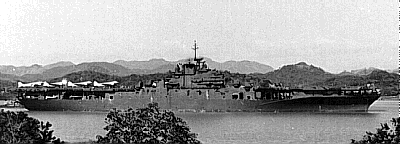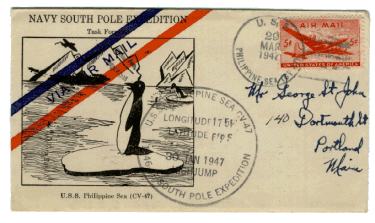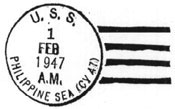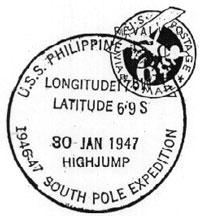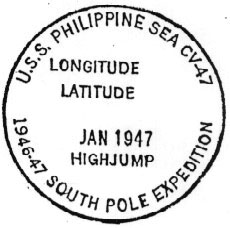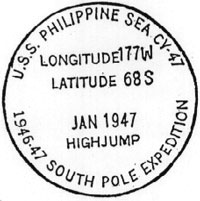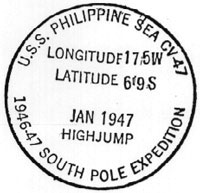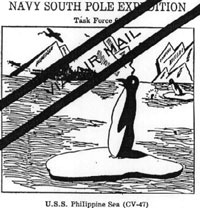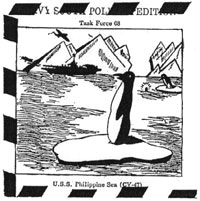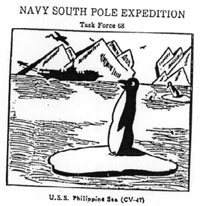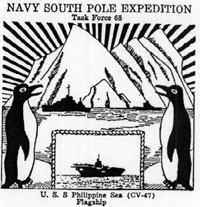|
Most covers posted from the USS PHILIPPINE SEA bear the standard 4-bar postmark (figure 1) although the ship's circular cachet was occasionally used to cancel covers (figure 2) where a specific date has been added to the basic design. Most of these are dated 30 JAN 1947 but at least one is known dated 7 JAN 1947. This cachet can be found with 'missing' longitude and latitude coordinates (figure 3) or with one of two known locations. Figure 4 places the ship at 177°W, 68°S while figure 5 shows her to be at 175°W, 69°S. A printed cachet (found on two sizes of covers, regular and business) noting USS PHILIPPINE SEA'S participation was prepared and apparently made available to the ship's crew. Printed in black, three varieties of this stationery have been reported. Figure 6 bears a blue and red "VIA AIR MAIL" imprint diagonally across the cachet whereas figure 7 uses the more conventional 'lozenges' around the perimeter of the envelope. A third style (figure 8) is free of any 'airmail' notations. One cover has been found with what must be a private rubber stamp 3-line cachet "NAVY ANTARCTIC / EXPEDITION / OPERATION HIGH JUMP" (figure 9) and the writer shows this due to the fact that a similar cachet appears on mail from the USS CANISTEO and USS BURTON ISLAND just for the record. The illustration shown as figure 10 is an example of W.G. Crosby's well-known thermographed, photo cachets. Philippine Sea is one of two ships serving during OPERATION HIGHJUMP that Crosby managed to place covers aboard before the ships departed the United States. The reasoning behind showing this particular design is to show the reader the similarities of this cachet to that shown in figures 6-8 which has been credited to Mr. Crosby but never (to this writer's knowledge) been proven. Further investigations is called for. |
